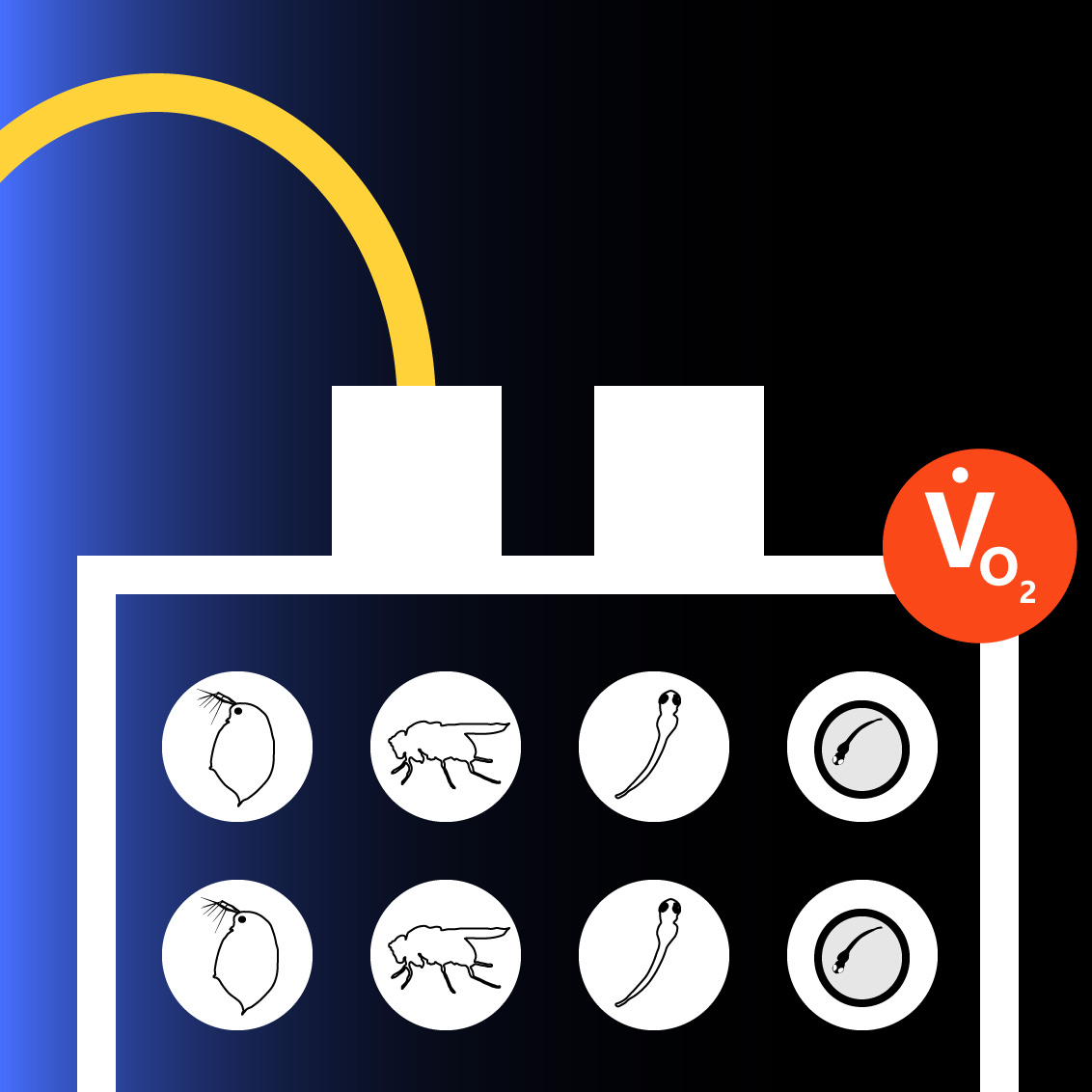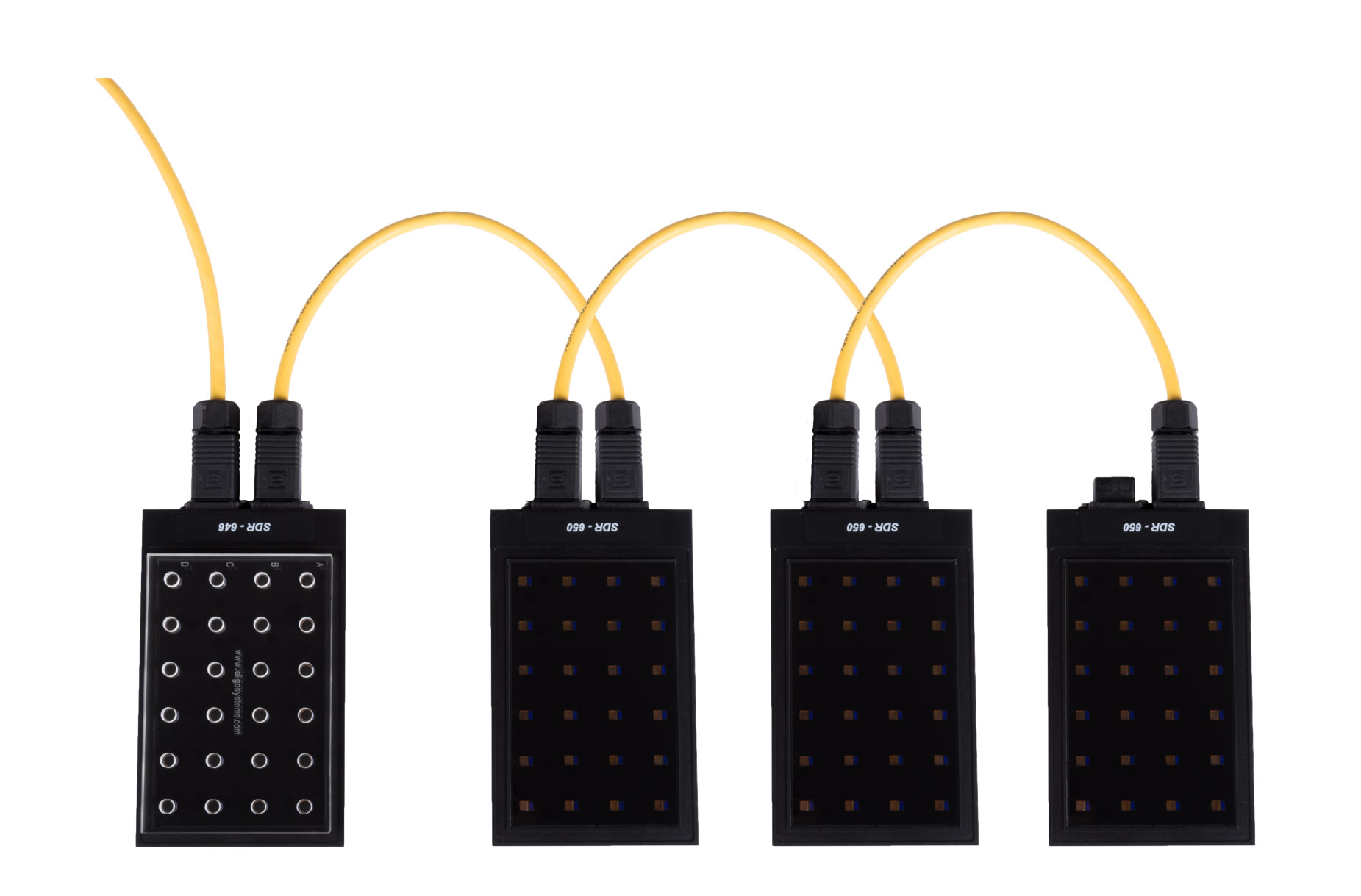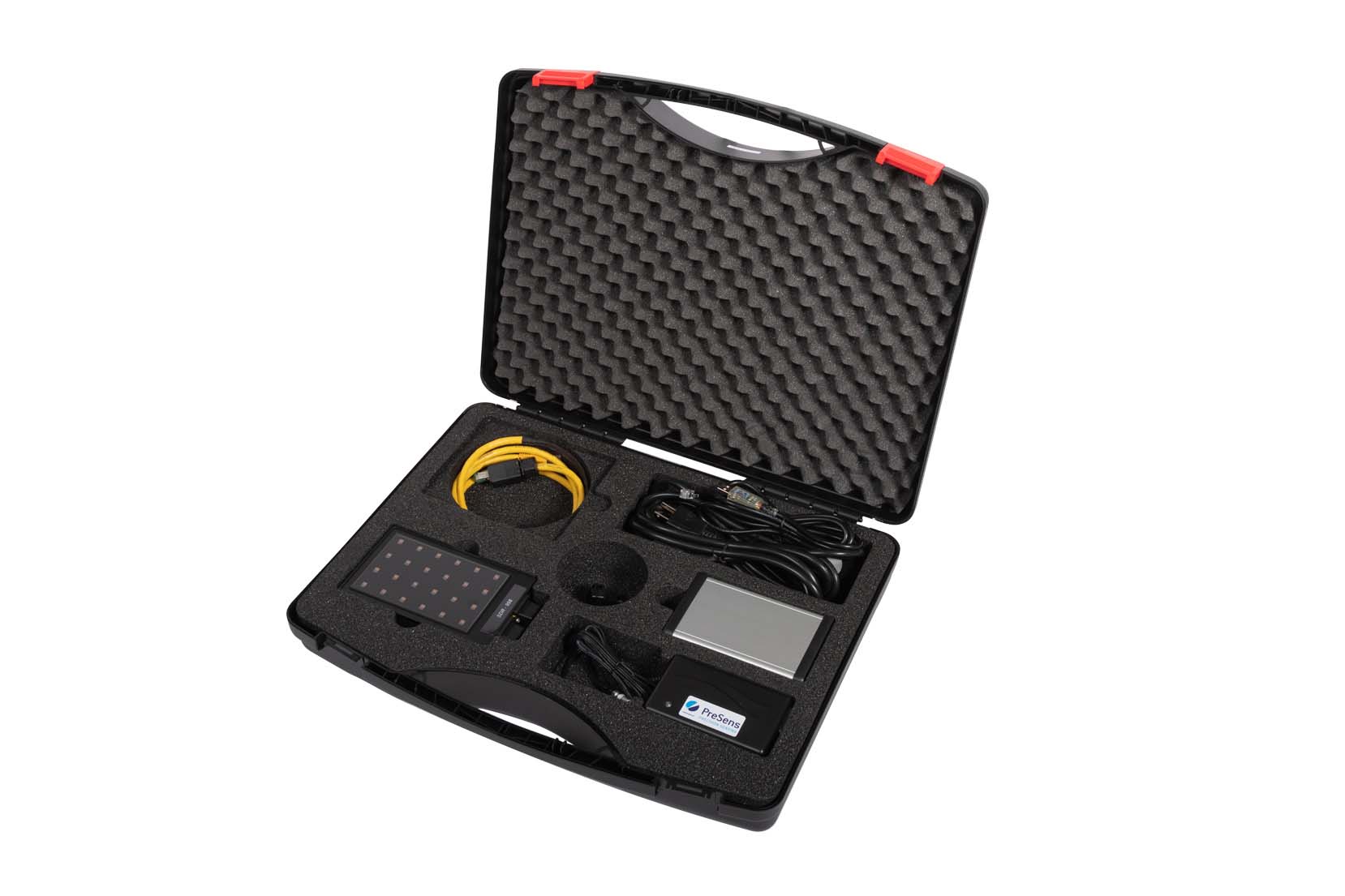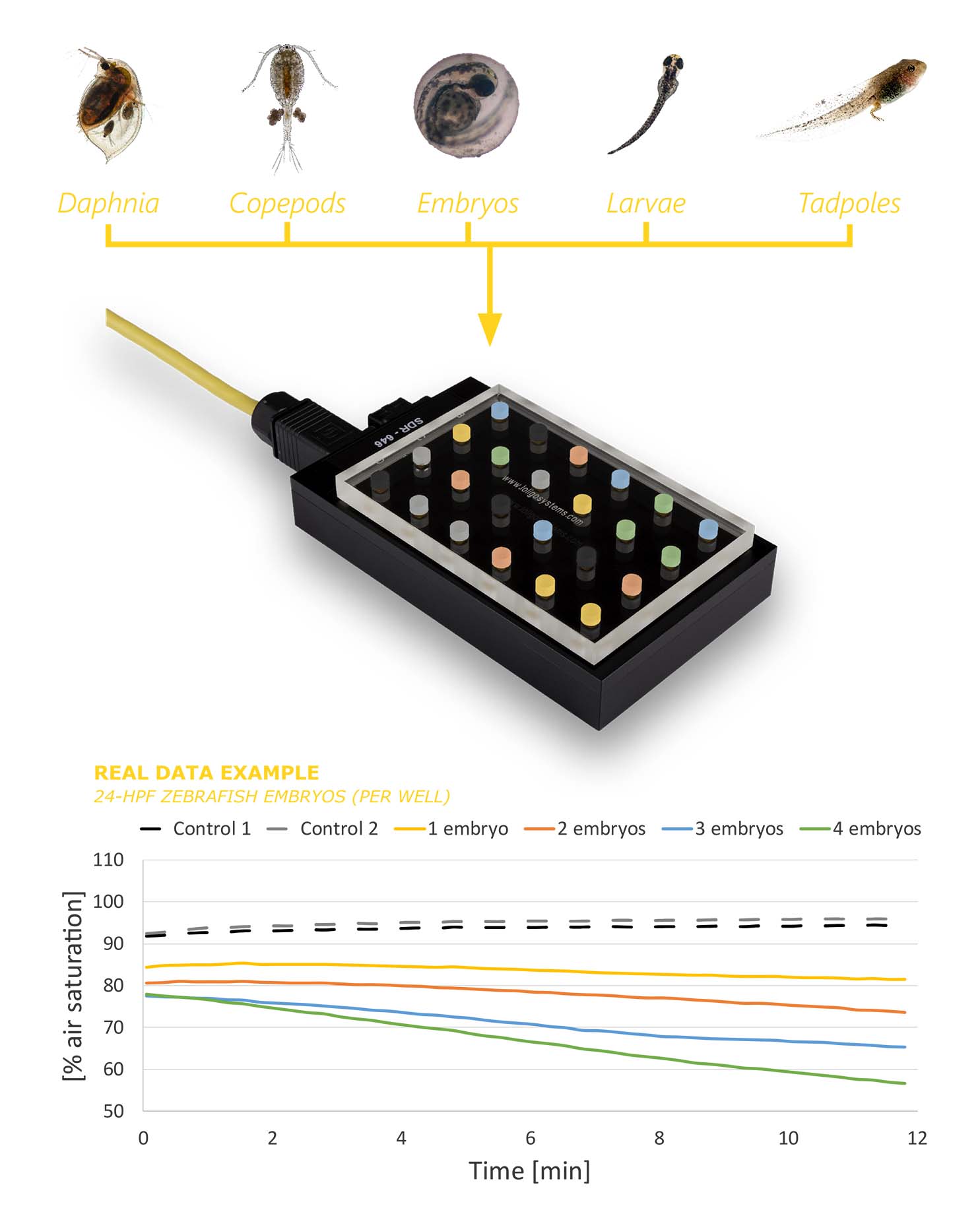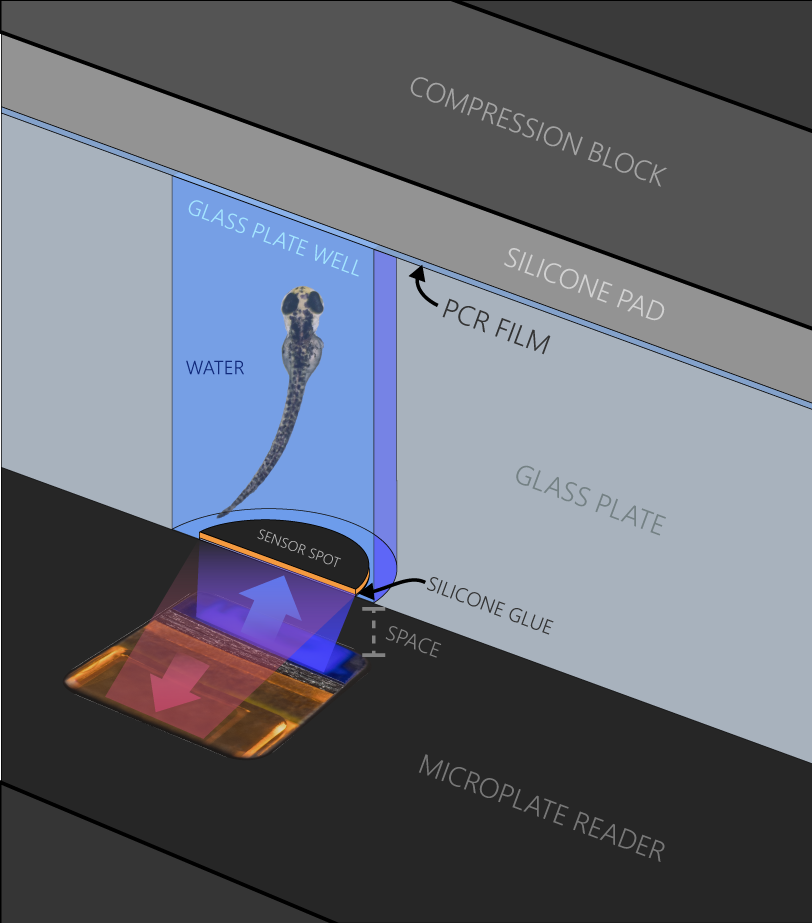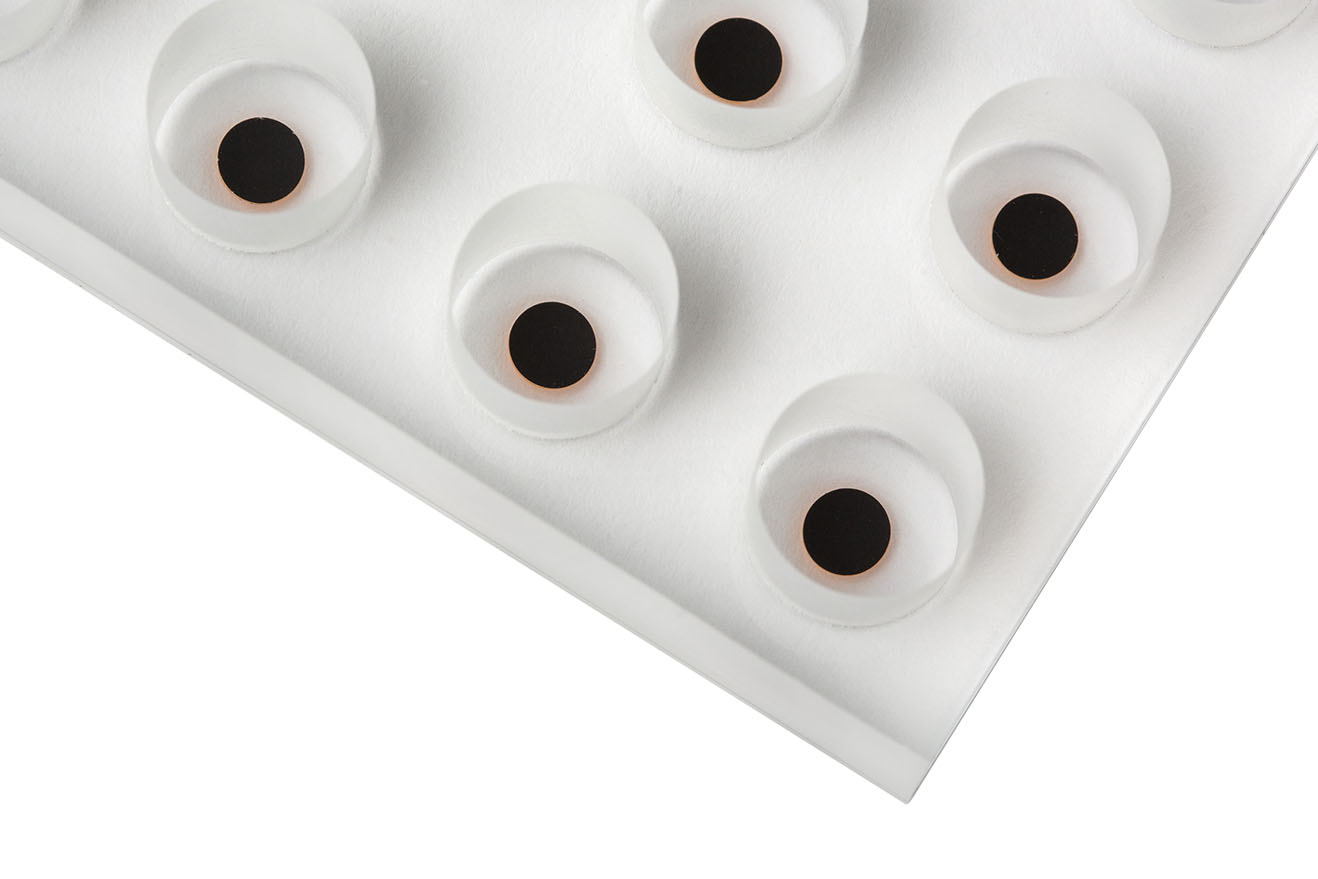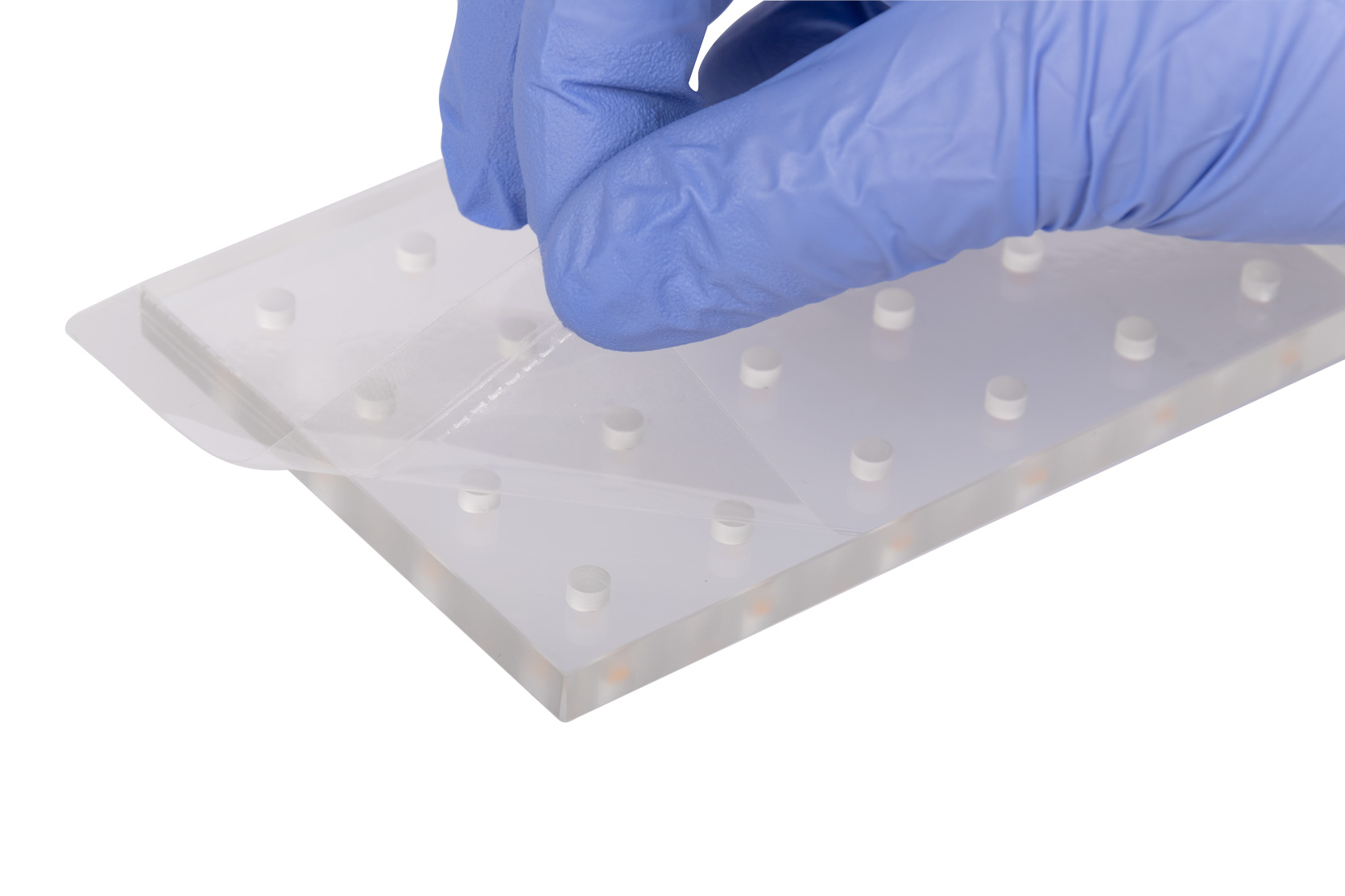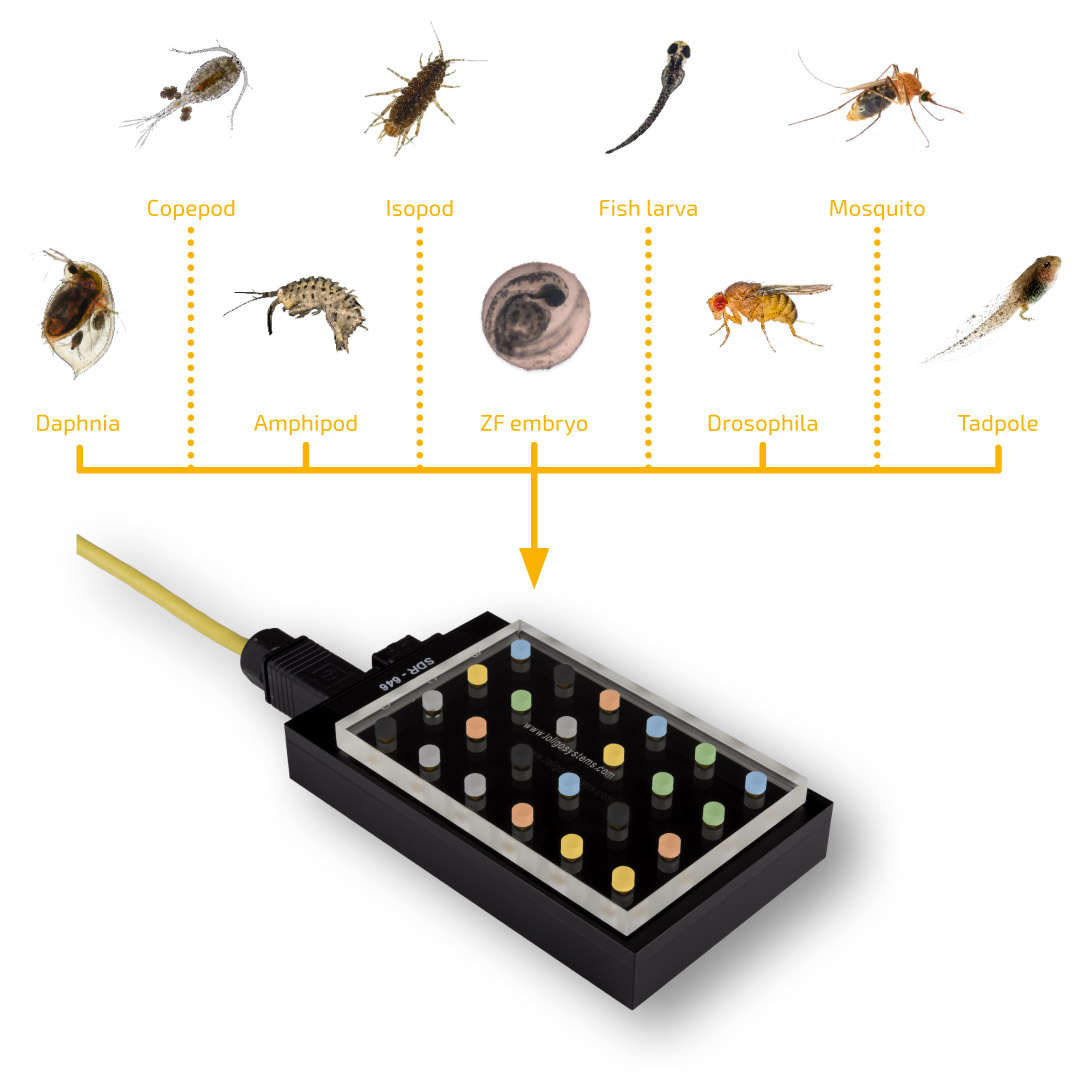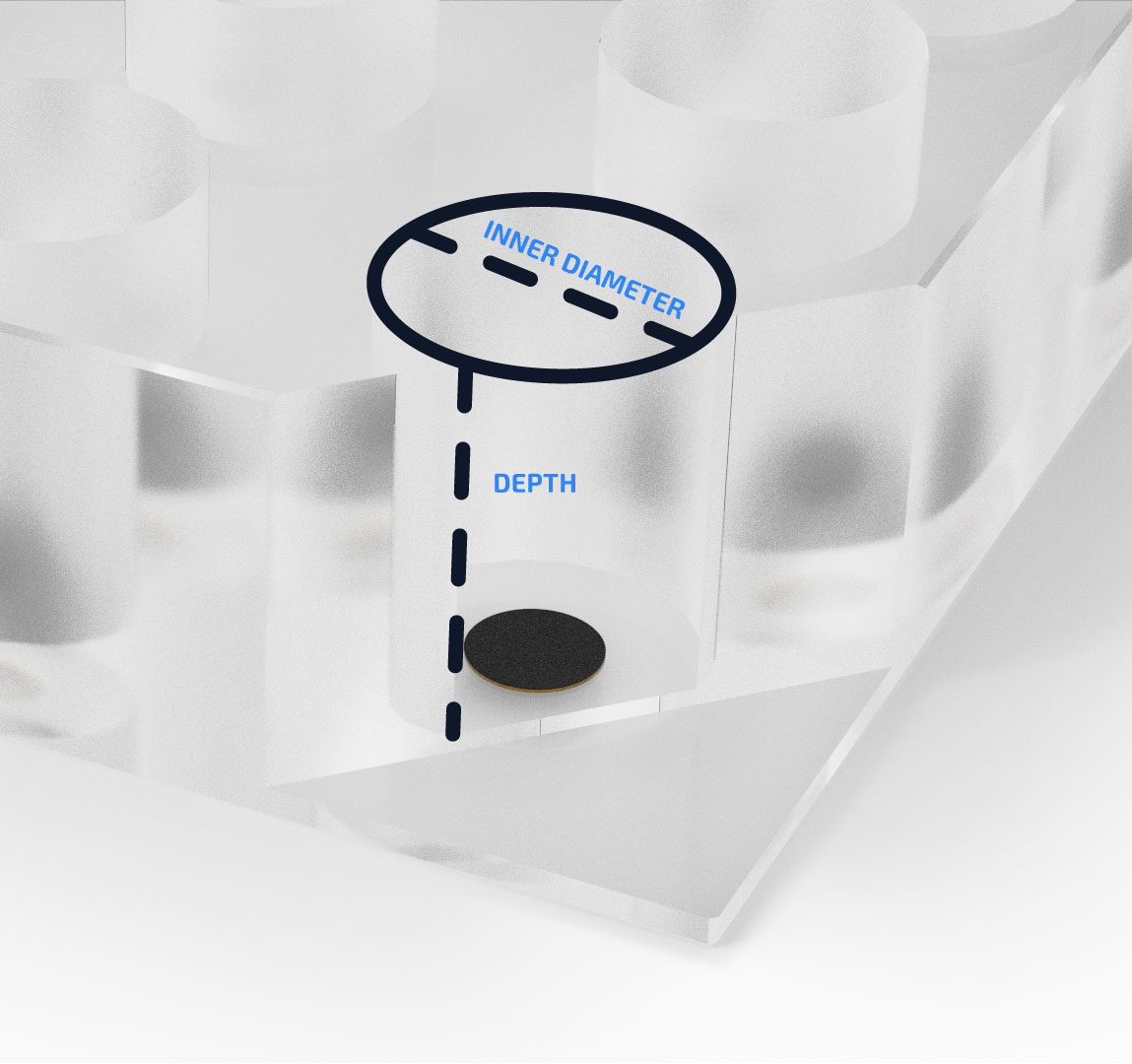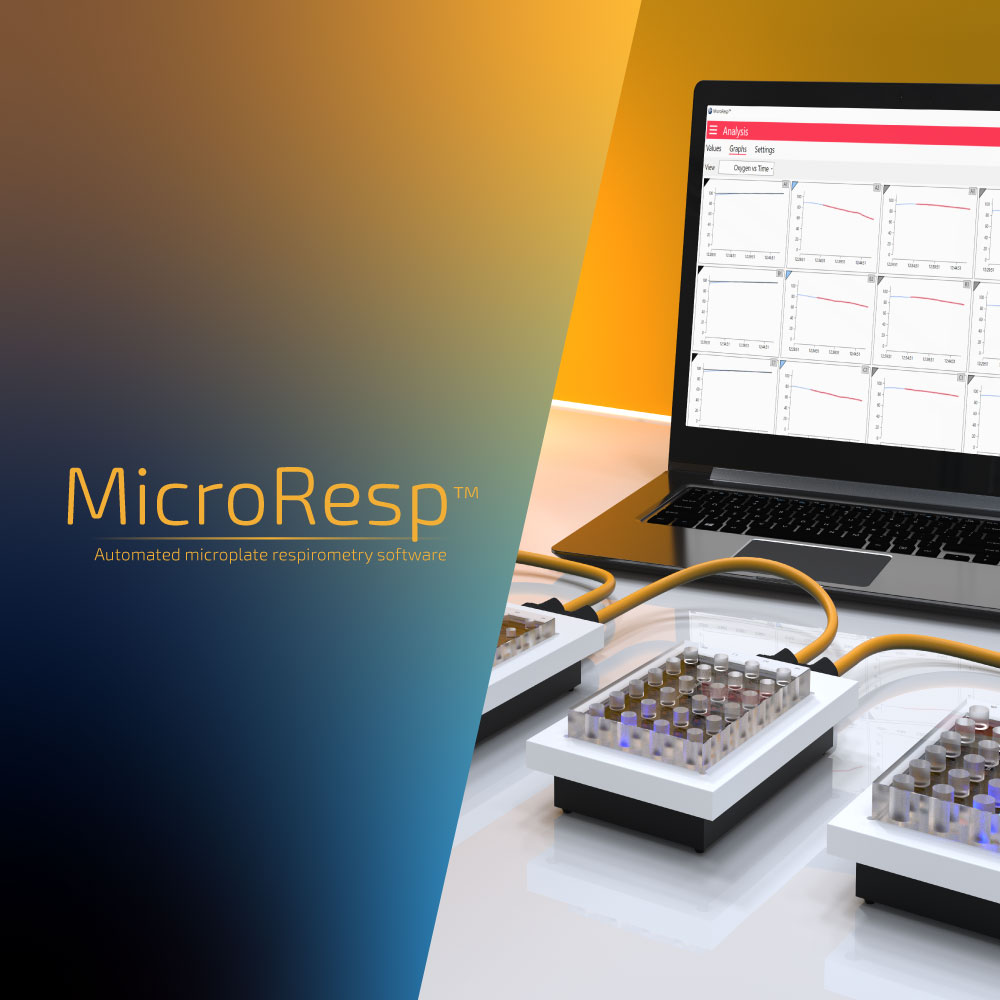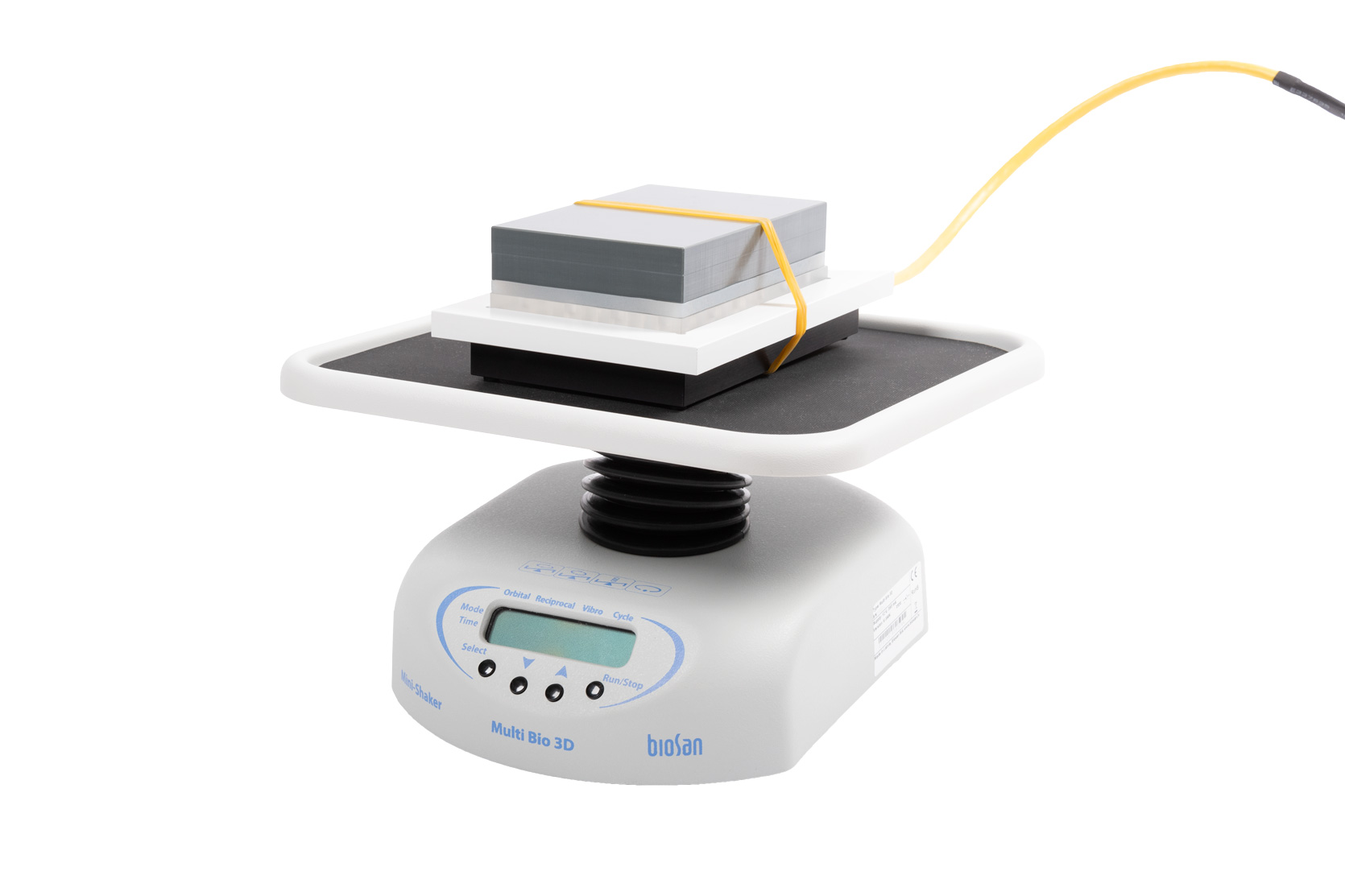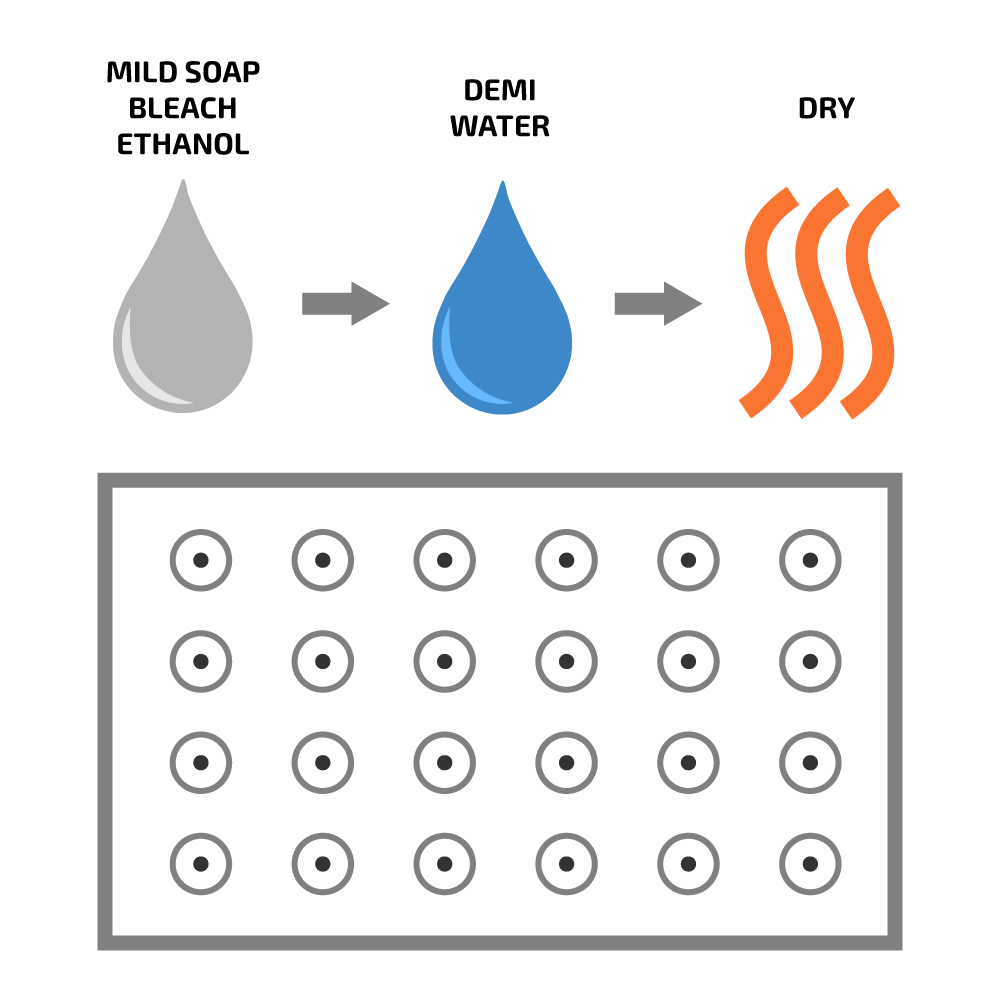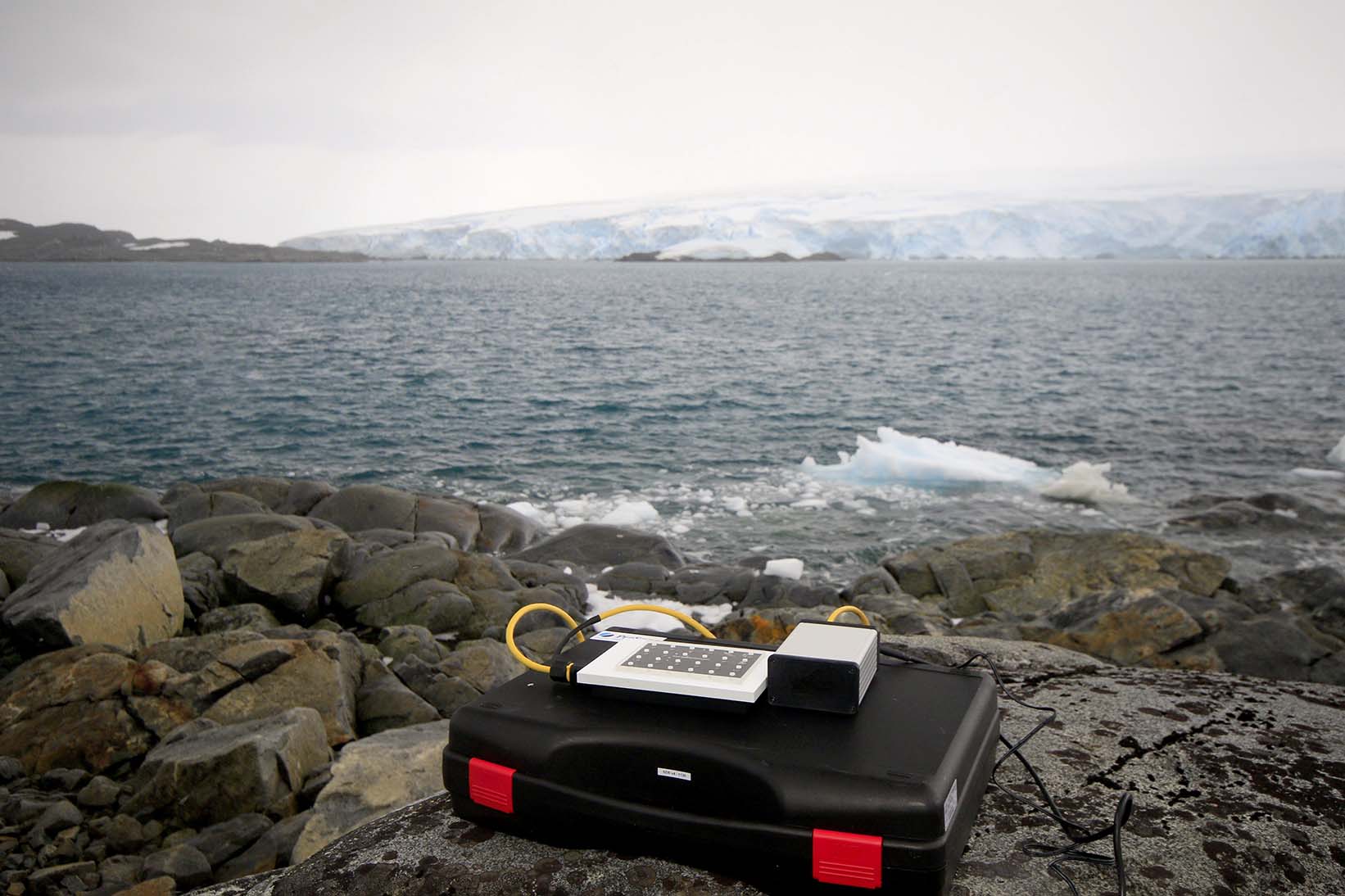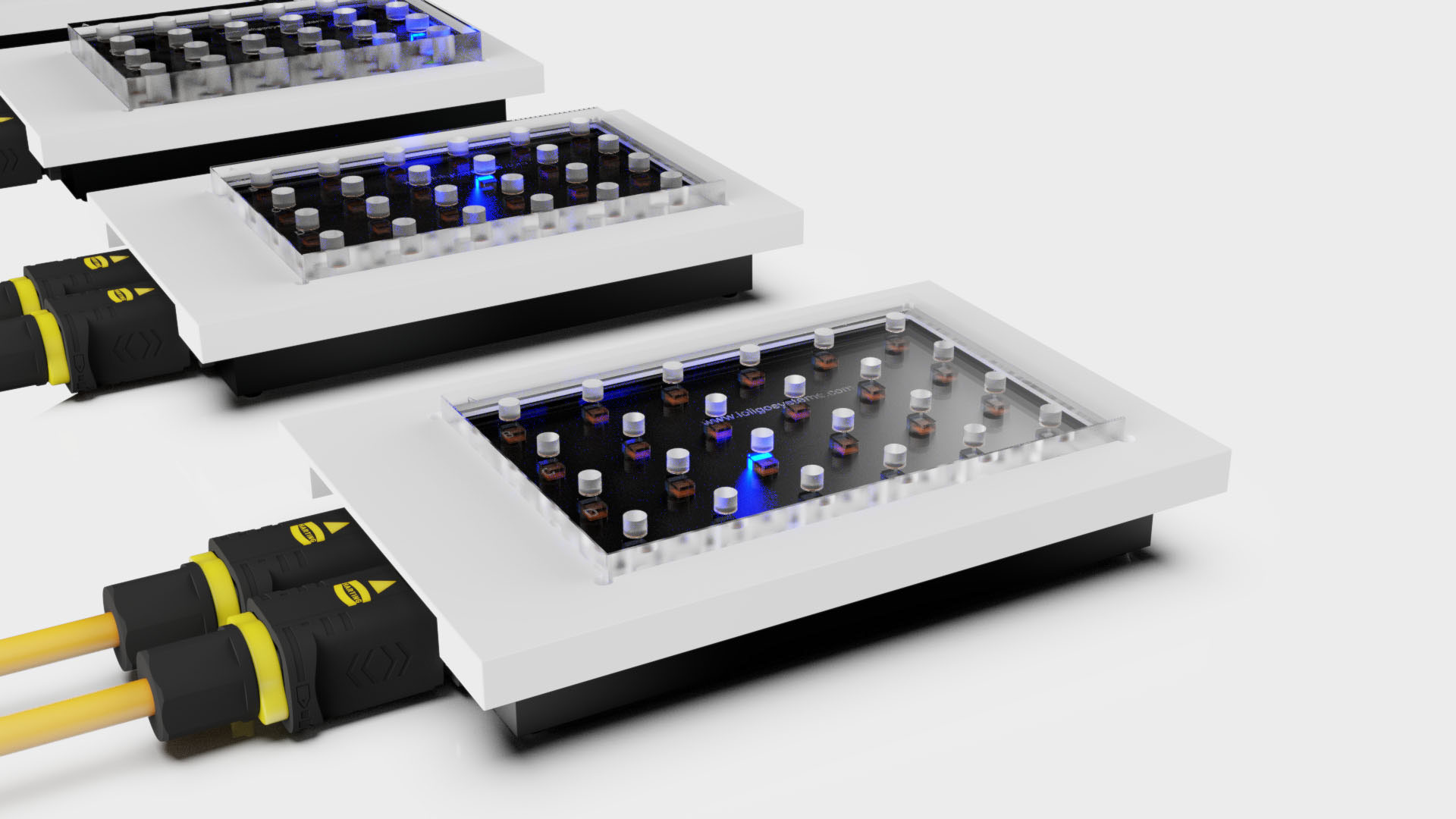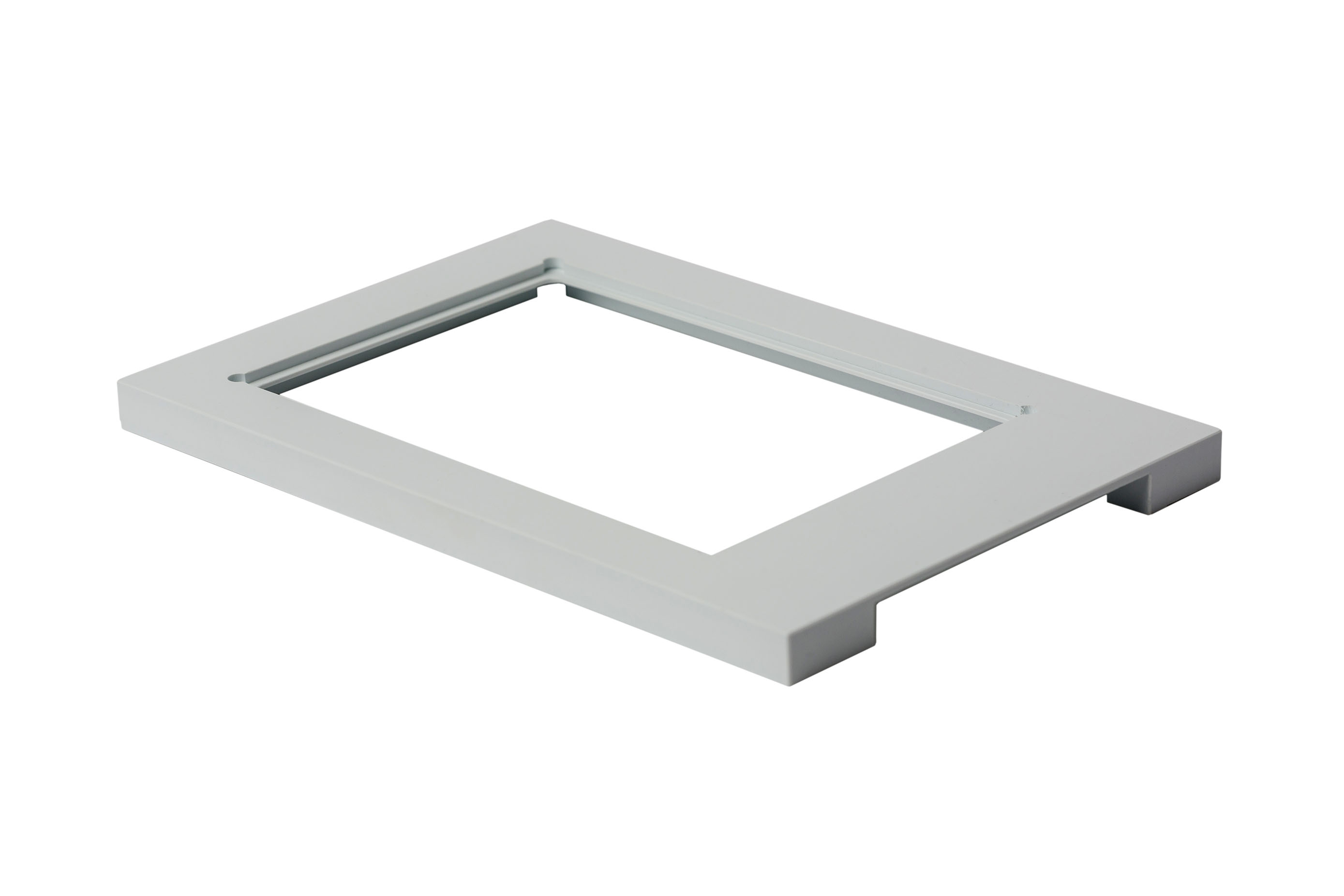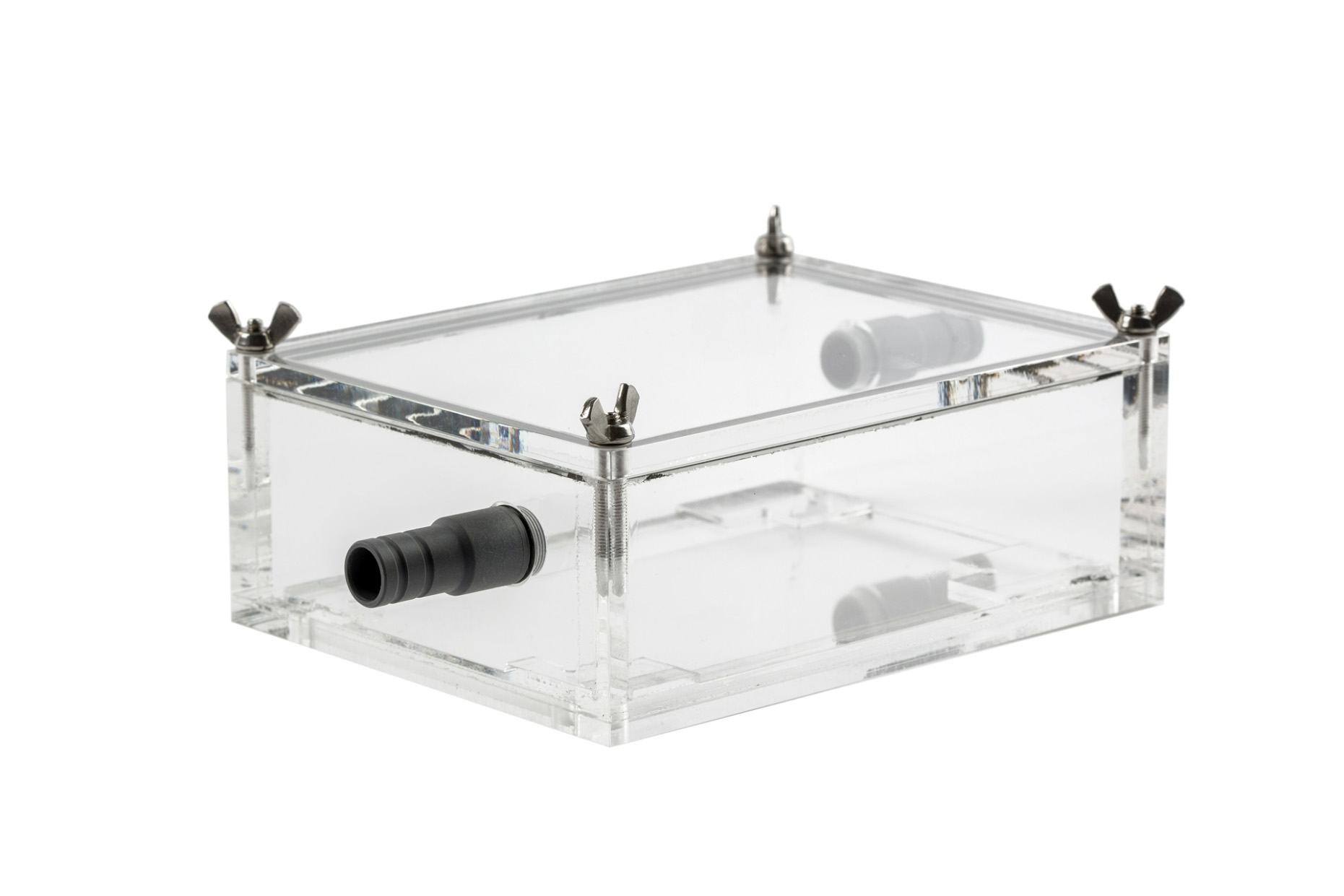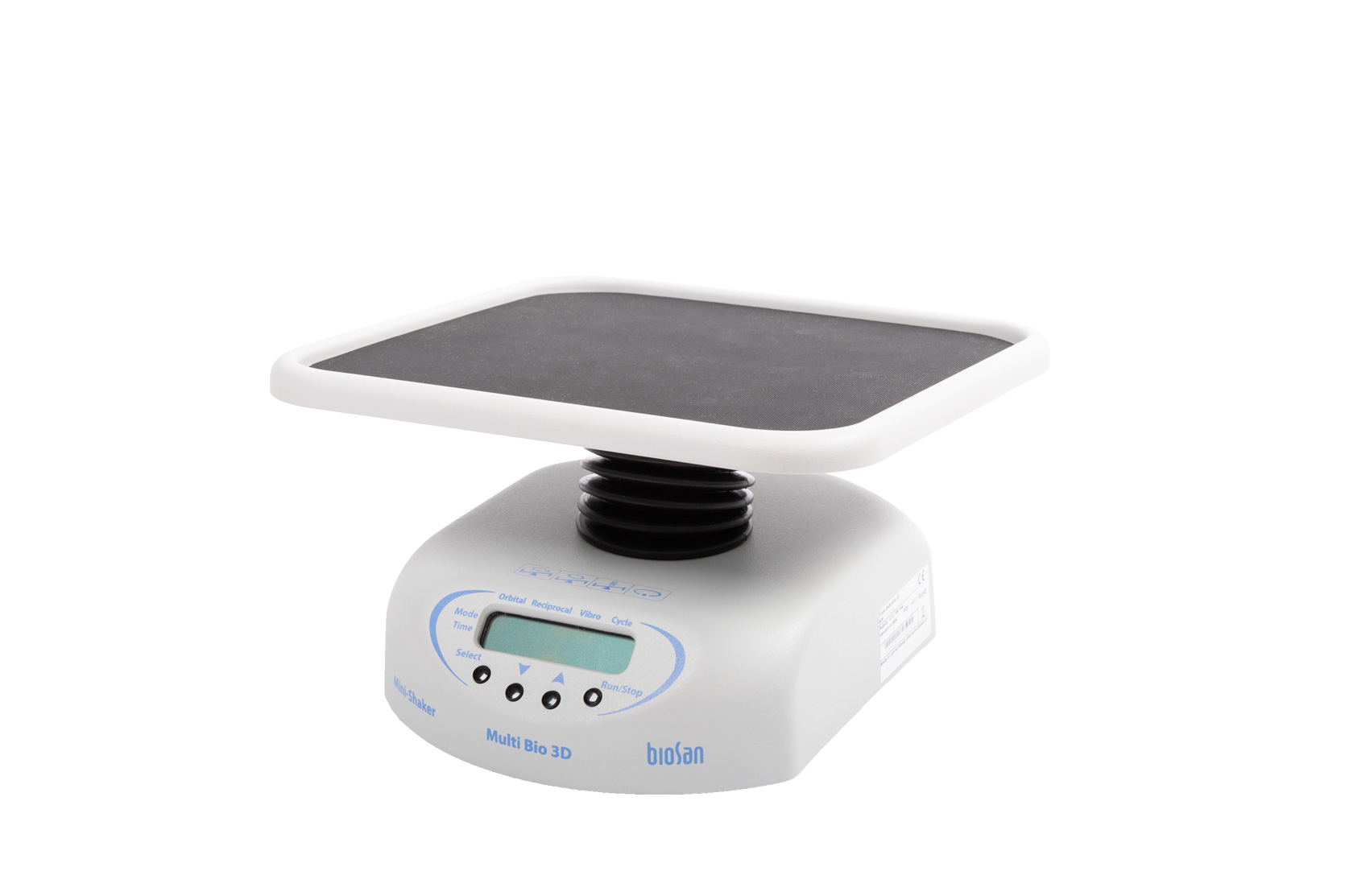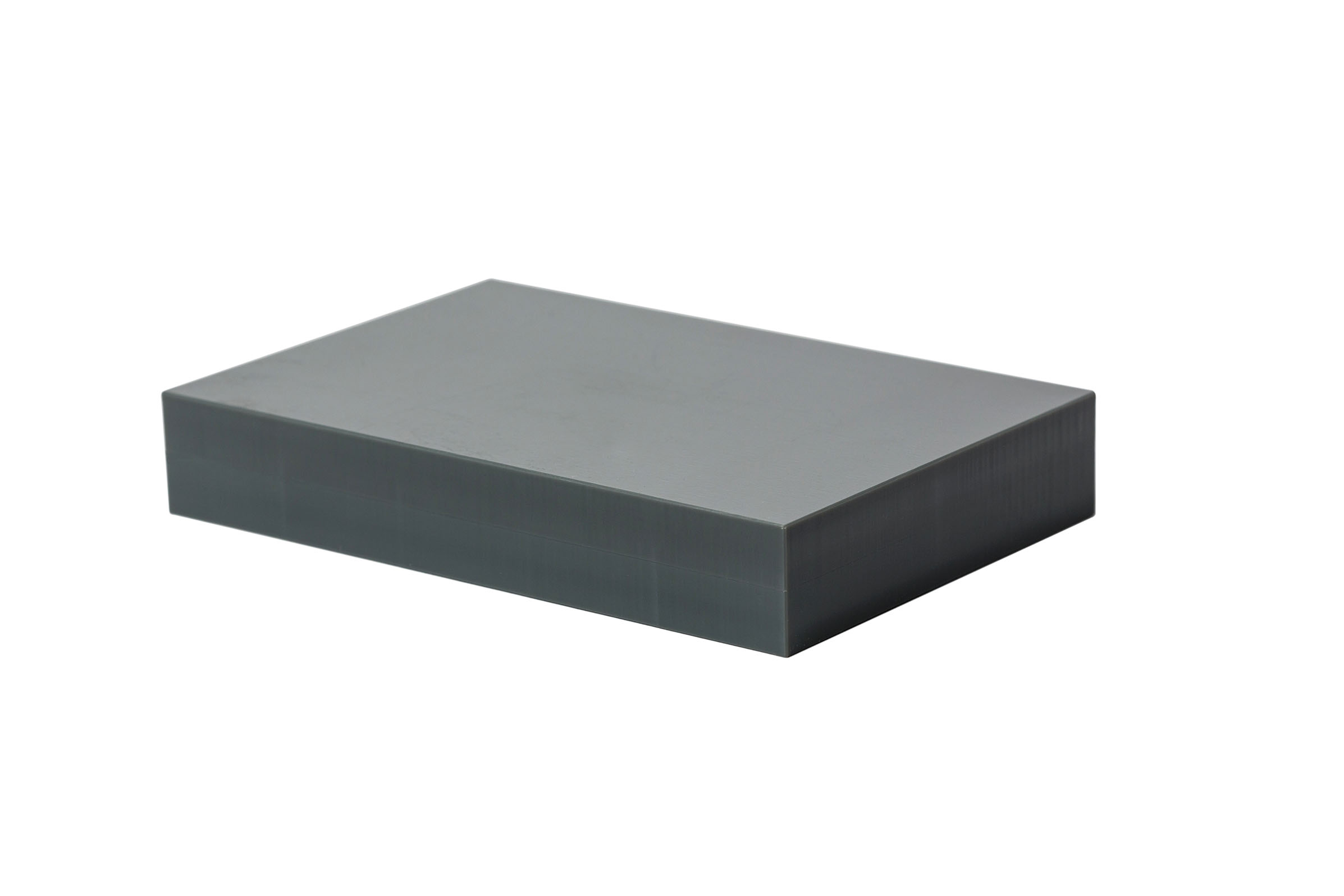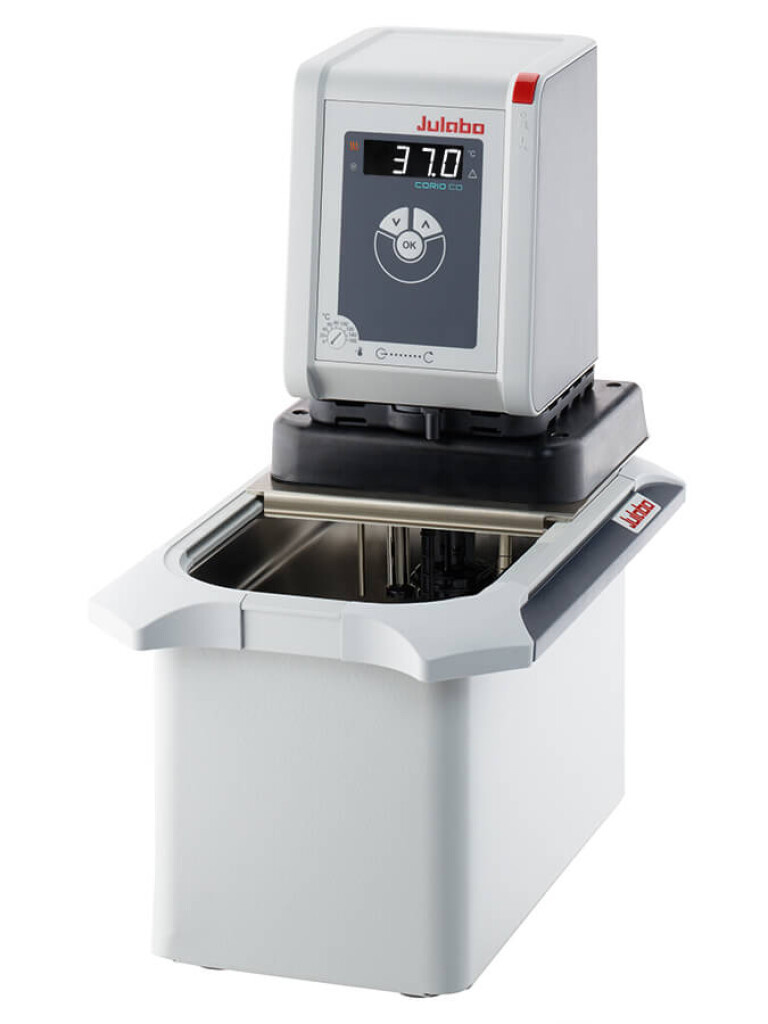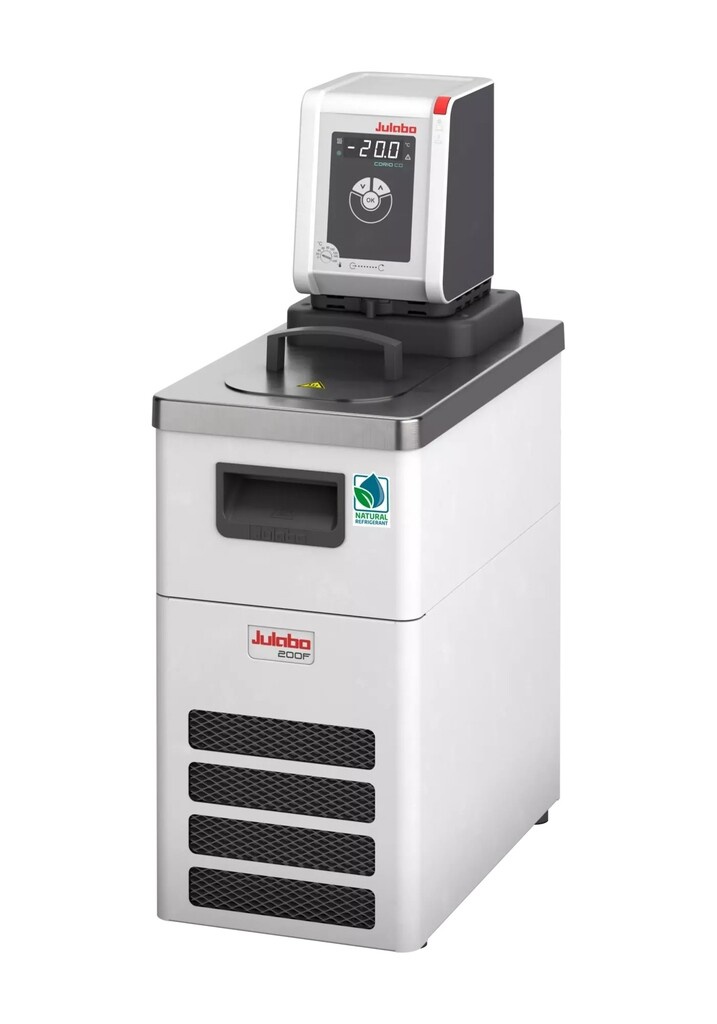The microplate respirometry system is an easy to use, high-throughput system for measuring individual respiration rates in tiny aquatic and terrestrial organisms – even over a wide range of temperatures (5 – 40 °C). The entire system is easily transported, e.g., to remote field stations, when packed inside the included transportation hardcase.
FEATURES
- Measure oxygen consumption or production rates in water or air
- Determine respiration rates in tiny organisms using glass 24-well plates
- Real-time O2 measurements inside each gas-tight well (closed respirometry)
- Connect up to 10 x 24-well plate readers to a single PC via USB for high throughput
- Available well volumes: 80, 200, 500, 940, and 1700 μl
- User-friendly MicroResp™ software for Windows 11 for data logging, statistics, and analysis
- Optical oxygen sensors can be re-used and re-calibrated for multiple trials
- Non-invasive & non-destructive measurements
- Re-usable borosilicate glass well plates
- Compact design for use in incubators and/or on shaker tables
Study small scale metabolism
The microplate system is suitable for studying metabolic rates in small aquatic and terrestrial species, including model organisms like:
- Daphnia and other freshwater and marine copepods
- Zebrafish (Danio rerio) embryos and larvae
- Medaka (Oryzias latipes) embryos and larvae
- Killifish embryos and larvae
- Xenopus sp. eggs and tadpoles
- Fruit flies (Drosophila melanogaster etc.) and more!
Peer-reviewed papers using the microplate system
Here is a short selection of published papers referencing the microplate respirometry system:
- Effects of temperature on metabolic rate during metamorphosis in the alfalfa leafcutting bee
Kayla N. Earls, Jacob B. Campbell, Joseph P. Rinehart, Kendra J. Greenlee (2023)
Biology Open
Link to article - Effects of elevated CO2 on metabolic rate and nitrogenous waste handling in the early life stages of yellowfin tuna (Thunnus albacares)
Rachael M. Heuer, Yadong Wang, Christina Pasparakis, Wenlong Zhang, Vernon Scholey, Daniel Margulies, Martin Grosell (2023)
Comparative Biochemistry and Physiology Part A: Molecular & Integrative Physiology
Link to article - Chemical manipulation of mitochondrial function affects metabolism of red carotenoids in a marine copepod (Tigriopus californicus)
Matthew J. Powers, James A. Baty, Alexis M. Dinga, James H. Mao, Geoffrey E. Hill (2022)
Journal of Experimental Biology
Link to article - Metabolic responses to crude oil during early life stages reveal critical developmental windows in the zebrafish (Danio rerio)
Karem N. Vazquez Roman, Warren W. Burggren (2022)
Comparative Biochemistry and Physiology Part C: Toxicology & Pharmacology
Link to article - Effects of marine mine tailing exposure on the development, growth, and lipid accumulation in Calanus finmarchicus
Linn H. Svendheim, Tjalling Jager, Pål A. Olsvik, Ida Beathe Øverjordet, Tomasz M. Ciesielski, Trond Nordtug, Torstein Kristensen, Bjørn Henrik Hansen, Bjarne Kvæstad, Dag Altin, Julia Farkas (2021)
Chemosphere
Link to article - Water-soluble fraction of crude oil affects variability and has transgenerational effects in Daphnia magna
Mikko Nikinmaa, Emilie Suominen, Katja Anttila (2019)
Aquatic Toxicology
Link to article - Genetic Variation in Metabolic Rate and Correlations with Other Energy Budget Components and Life History in Daphnia magna
Sigurd Einum, Erlend I. F. Fossen, Victor Parry & Christophe Pélabon (2019)
Evolutionary Biology
Link to article
Other applications include examining mosquitoes, ticks, bedbugs, and other biological vectors, but also spiders, egg sacs, arthropod pupae, and even algae, bacteria and cell suspensions or isolated tissue and organs. In fact, you can measure the oxygen consumption (or oxygen production) of mostly anything that fits inside the glass plate wells.
Multiple well volumes
A core microplate system includes a single borosilicate glass well plate with either of the following well sizes:
|
Volume (µl) |
Inner diameter (mm) |
Depth (mm) |
|
80 |
4.5 |
5.0 |
|
200 |
6.0 |
7.0 |
|
500 |
8.0 |
10.0 |
|
940 |
10.0 |
12.0 |
|
1700 |
12.0 |
15.0 |
Any of the five plates is compatible with the same microplate reader included in the system. This allows you to run different sized well plates from the same microplate setup, thus making it easier for you to study multiple sizes and species of animals.
Automate your system with MicroResp™ software
The MicroResp™ software for Windows 11 is included in the core system. MicroResp™ is user-friendly software that can be used for data logging, treatment setup, sensor calibration, and data analysis. Using MicroResp™ will get the most out of your microplate respirometry system.
Want to try MicroResp™?
Downloading MicroResp™ from our website lets you run the software in demo mode simulating virtual hardware. Experience the intuitive user interface or use the analysis menu to explore real microplate data files from any PC with MicroResp™ installed.
Real microplate data example using Drosophila littoralis in a 200 µl well plate setup. Data from Professor Jesper Givskov Sørensen, Aarhus University.
A simple setup
One or multiple organisms are placed inside each of the gas-tight 80-1700 µl glass wells, typically using a pipette, spatula, or aspirator tube (when dealing with fleeing arthropods).
Seal the wells using a gas impermeable, transparent, and self-adhesive polyester film that sticks onto the surface of the glass plate. The glass material provides non-permeable surfaces; unlike ordinary well plates that are made of plastic materials that can act as a sink or a source for oxygen depending on sample pO2.
The sealed glass plate is placed onto the reader using the guide so that the 24 oxygen sensor spots are aligned with the 24 blue LED light sources and photo receptors. The reader, guide, and plate fits easily inside an incubator, or just in a climate-controlled room, to control the temperature of the glass plate.
An optional acrylic flow-through water bath provides a simple solution for temperature control. Place the water bath onto the reader, and the sealed glass plate inside the water bath, and then run thermostated water through the bath covering the glass plate. In addition, use the water bath for calibration with air and nitrogen.
For immobile organisms in water, like embryos, polyps, or sea anemones, use the orbital shaker table to minimize the risk of oxygen stratification inside the well space.
Compact design, easy transportation
The microplate system takes up minimal lab space when in use, and requires only a single wall outlet for power, and it connects to your Windows PC via USB. The entire system is securely transported to even remote locations using the included hardcase.
Learn about how a team of researchers brought the microplate system with them to the Antarctic to study metabolism in terrestrial midge larvae:
Need higher throughput?
The core microplate system includes a single 24-well plate and reader. Should you need a higher throughput, simply expand the system with up to nine add-on systems each including one extra reader and glass well plate, i.e., for measuring respiration in up to 240 organisms simultaneously.
Need help?
If you need help setting up the microplate respirometry system, getting started with the MicroResp™ software, or if you need inspiration for your next project, have a look in large collection of quick guides and user manuals, our YouTube channel for useful video tutorials, and our ever-expanding list of peer-reviewed published papers using the microplate system.
